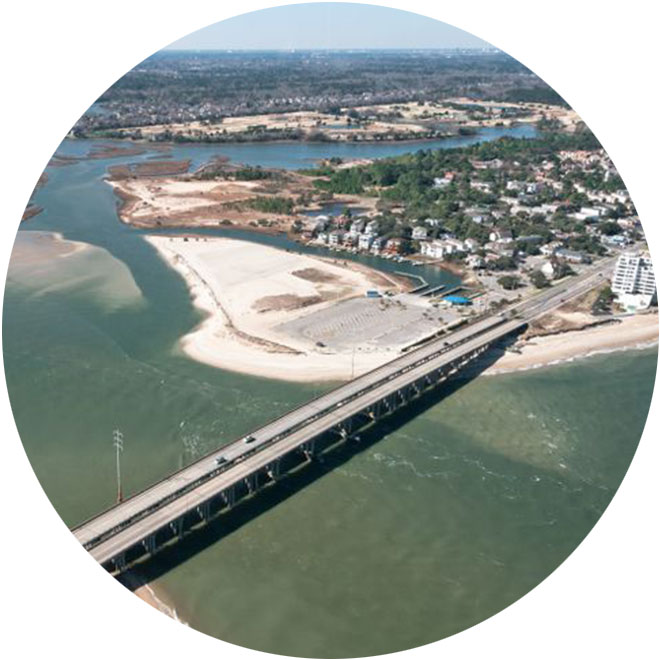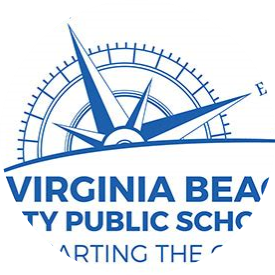Treasures of Virginia Beach
As part of our vocation as environmental professionals, especially during the global pandemic, we often take advantage of the many opportunities to enjoy the terrific natural resources in the City of Virginia Beach. Just this past week, we chose a nice long trek in the City’s southernmost region via False Cape State Park (False Cape). Nestled between the Atlantic Ocean and Back Bay, False Cape boasts nearly 4,000 acres and is one of the last and largest remaining undeveloped areas along the Atlantic Ocean – a true rarity and treasure in the City.
Not surprisingly, our 18-mile journey through False Cape revealed a profusion and diversity of natural resources and wildlife habitat. Incredibly, our walk traversed an incredibly diverse array of resources – from the Atlantic Ocean and its impressive primary sand dunes to the east, through the maritime forests and palustrine wetlands in the interior, to the vast brackish marsh and open water areas of Back Bay. Amazingly, these three distinct communities– Ocean-Beach-Dunes/ Maritime Forest/ Back Bay System – were all encountered within just a 1 mile transect.
Ironically, these communities are part of a much larger narrative involving the Back Bay National Wildlife Refuge (Refuge). Currently, MAP Environmental Inc is collaborating with the City of Virginia Beach and Dewberry Engineers on a marsh restoration project within Back Bay. This project, as envisioned, will restore over 200 acres of brackish wetlands through the establishment of marsh terraces in the middle of Back Bay. Over the past several months our company has been busy studying the vegetative communities in the Bay, and formulating recommendations for appropriate wetlands plant species on these marsh terraces.
Meanwhile, as our journey proceeded through Back Bay, thoughts of an improved Back Bay and newly established march terraces certainly crossed our minds. Judging from the following photos, a network of innovative marsh terraces would provide a much-needed ecological boost and shot in the arm to the Back Bay ecosystem.

As our travels proceeded through False Cape and Back Bay, we were treated to a myriad of interesting native flora and fauna. Various birds, small mammals, amphibians, and reptiles were commonly observed and noted along the way. One of the most noteworthy and often maligned guests was a small water moccasin viewed along the western dike of Back Bay. With temperatures in the upper 50’s yet with brilliant sunshine, our reptilian sunbather quickly made his presence known and even managed to interrupt, or at least, detour bike and foot traffic along the western dike.

Meanwhile, not to be outdone by its rich and valuable ecological attributes, False Cape also boasts some intriguing cultural and historical resources including the legendary Wash Woods community. Located in the Park’s southern extreme and a skosh above the Virginia – North Carolina state line, Wash Woods is a historically significant yet abandoned site that was reportedly established in the 17th and 18th century by survivors of shipwrecks that occurred off the coast of False Cape. The community, which was inhabited as recently as the late 1800s/early 1900’s, has been reduced to an abandoned site with the only a few remaining features- sandy walking trails, preserved church steeple and a nearby graveyard.

As we exited Wash Woods and headed northward back to civilization and the starting point (False Cape State Park parking lot), our 18-mile trek afforded a second viewing of the magnificent and unique treasures of the Park and the Back Bay National Wildlife Refuge.

Our return walk enhanced our appreciation for such unique and resources and, in a City of 450,000 residents, is truly a rare and invaluable jewel in Virginia Beach. As Virginia Beach continues to evolve and grow, particularly in the southern part of the City, efforts to enhance, diversify and effectively manage such resources as False Cape State Park and Back Bay Wildlife Refuge must remain a high priority and adjusted accordingly in the years and decades to come.
Whether a resident, environmental professional or steward, just a simple journey through these wonderful creations in our own backyard remind us of the great opportunity to cherish, preserve and enhance these natural resources – for our own generation and the ones to follow!









